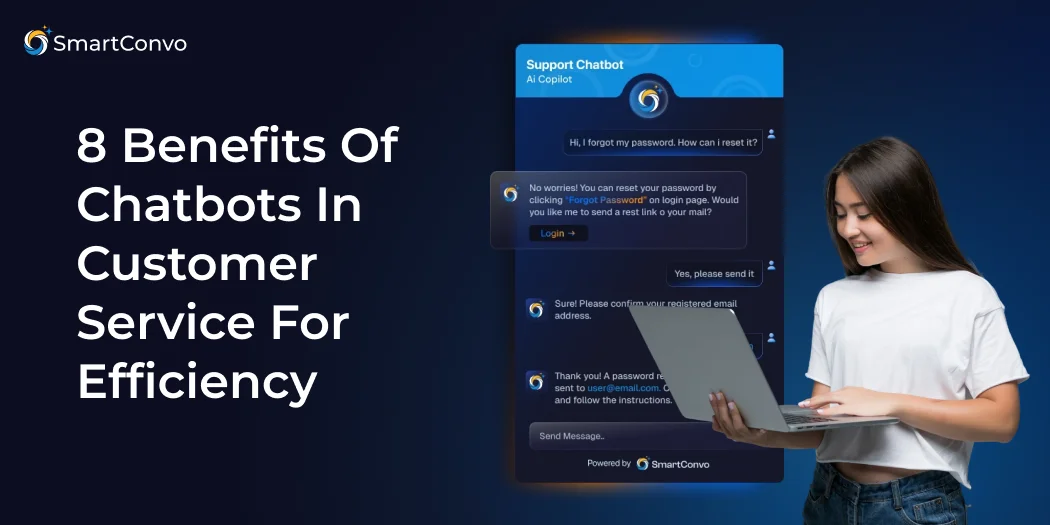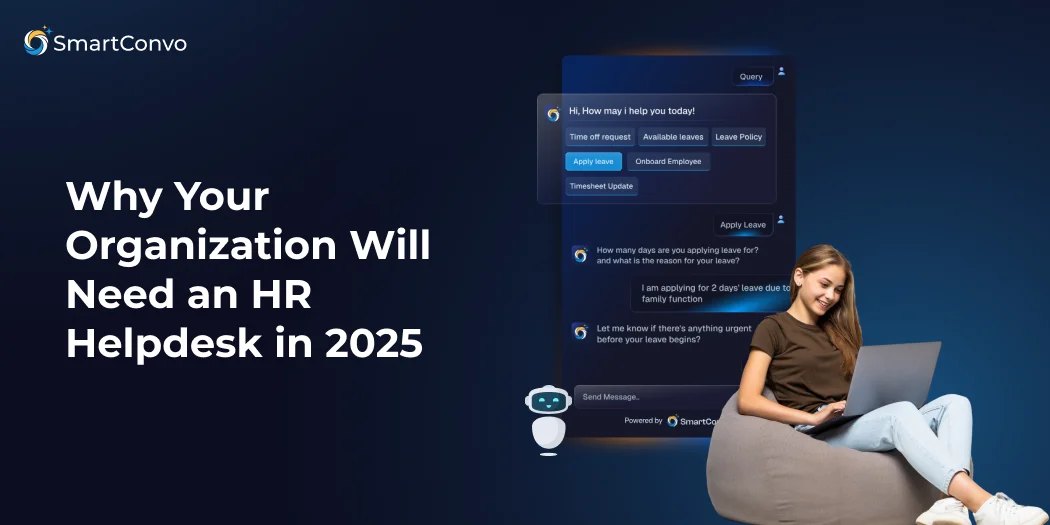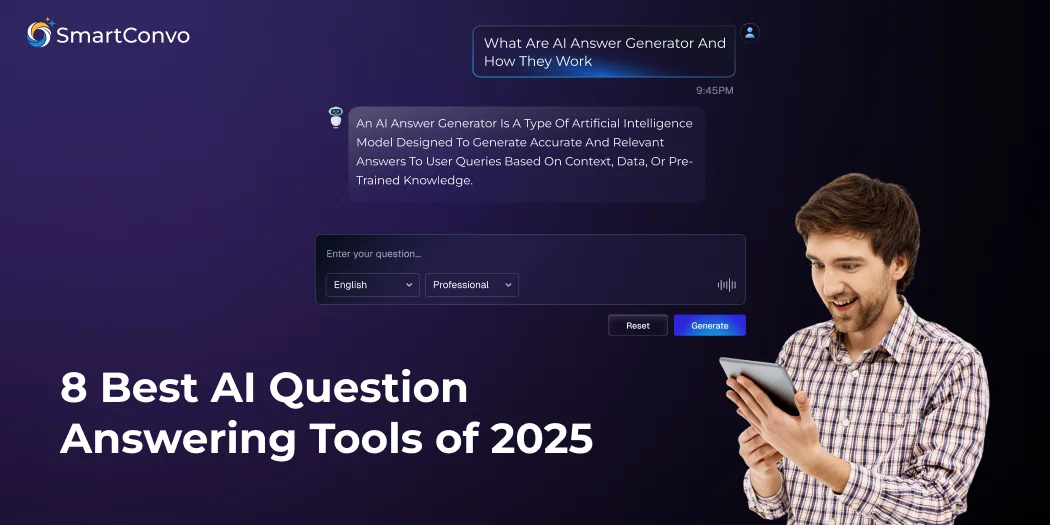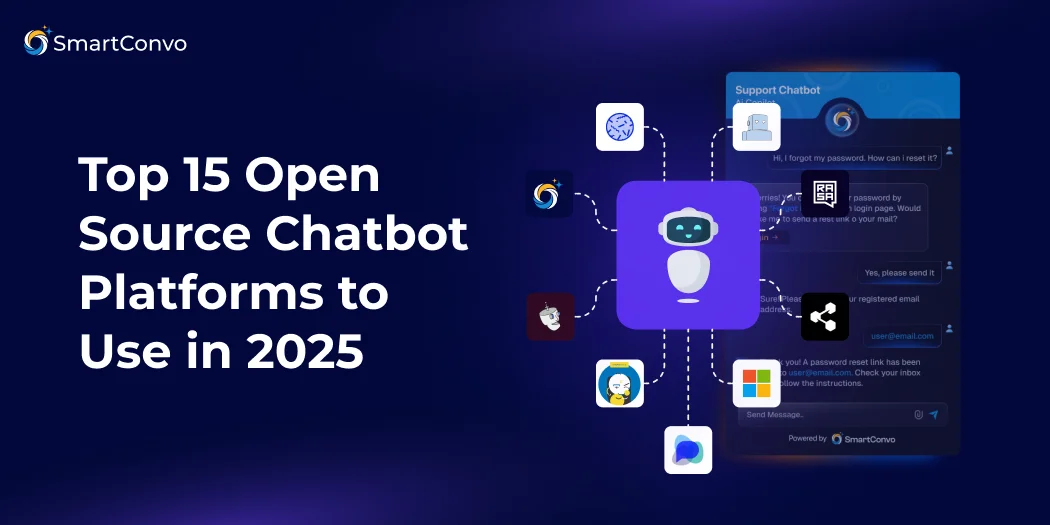Your customer service inbox is overflowing, phones are ringing off the hook, and your support staff is doing their best to keep up. Despite everyone’s hard work, response times get longer, your team gets frazzled, and some customers walk away feeling unheard. It’s enough to put anyone off their coffee.
But what if you had a friendly digital helper that jumped in to answer common questions instantly?
What if every customer received a greeting, a quick solution, or was routed to the right expert within seconds? Enter chatbots for customer service! They’re the secret ingredient that’s transforming support teams everywhere.
Whether you’re a customer service manager looking to shave minutes off every ticket, a business owner determined to wow your clients, or a tech enthusiast who loves a smart solution, learning about the benefits of chatbots in customer service will open up a world of efficiency and happier customers.
This blog covers the basics of customer service chatbots, the top eight benefits they bring to your support desk, and tips for launching a bot your team and customers will love. We’ll share strategies for smooth implementation, address common concerns, and answer FAQs.
What Are Customer Service Chatbots?
A customer service chatbot is like a tireless virtual assistant. These AI programs communicate with customers in real time, answering questions, resolving issues, and handling transactions. Whether on a website, messaging app, or SMS, chatbots are always ready to greet, guide, and support.
But don’t picture some cold, robotic presence. Today’s customer service chatbots come loaded with personality and smarts. The latest generation uses Natural Language Processing (NLP) and machine learning to understand context, intent, and even emotional tone.
Some, like Jasper for Document AI, can analyze customer queries and leverage deep learning to deliver impressively relevant responses.
Types of Chatbots in Customer Service
- Rule-Based Chatbots: Think of these as recipe followers. They stick to scripts based on keywords or menu selections. If the customer asks about store hours or wants to reset a password, no problem. If it’s something more complex, they’ll pass the query on.
- AI-Driven Chatbots: These are your kitchen whiz kids! AI chatbots understand intent and context, offering nuanced, relevant answers and learning from every interaction. Over time, they get even better at anticipating customer needs.
- Hybrid Chatbots: Can’t decide? Go hybrid! These bots start with automated responses, but if the conversation gets tricky, they pass the reins to a human agent.
Top 8 Benefits of Chatbots in Customer Service
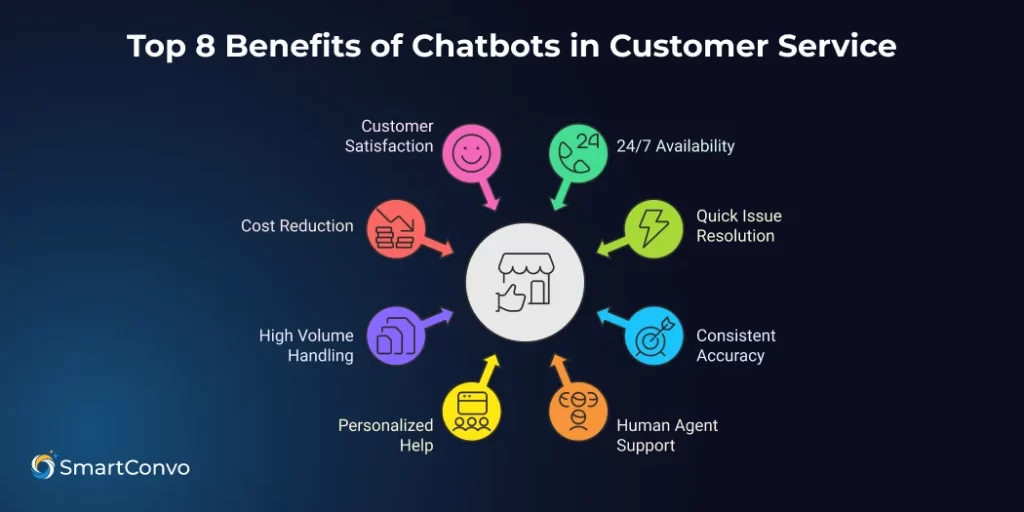
1. Available 24/7 With Instant Response
Need support at 2 a.m. when help desks are offline? No problem! One big benefit of chatbots is their 24/7 availability. Unlike traditional customer service teams, chatbots are always online, ready to assist no matter the time of day or night.
They don’t need coffee breaks, sleep, or holidays, ensuring your customers get instant replies anytime they need help
Why it matters:
- Captures after-hour inquiries without staffing up.
- Delivers support across global time zones with zero lag.
- Builds a reputation for reliability.
A retail site employing an AI Answer Generator experienced a significant improvement in customer support, with a 30% drop in missed support tickets after implementing chatbots to handle inquiries during the overnight shift.
2. Quickly Solves Common Issues
Every support team fields “the usual suspects.” How do I reset my password? Where’s my order? What’s your return policy? These common, repetitive questions can take up valuable time for support agents. That’s where chatbots for customer service come in.
Why it matters:
- Let’s focus on garlic-chopping, not peeling potatoes.
- Resolves up to 80% of repetitive tickets automatically.
- Frees up resources for complex or sensitive requests.
Enterprise AI solutions with customer service chatbot integration save, on average, 4-8 hours per rep per week by automating responses to repetitive queries. This not only boosts productivity but also allows customer service teams to focus more on complex issues.
3. Gives Consistent, Accurate Replies
Ever played telephone and watched the message get lost in translation? With chatbots, every customer hears the same clear, on-brand reply. The benefits chatbot systems offer include unflappable consistency, even when support volume spikes.
Why it matters:
- No more misinformation from tired or distracted agents.
- Ensures brand messaging stays on point.
- Supports training and compliance needs.
Brands using chatbots in customer service report a 15% rise in customer trust, largely due to their ability to provide consistent and reliable answers. By delivering quick responses and maintaining accuracy, chatbots help build stronger relationships with customers over time.
4. Supports Human Agents, Not Replaces Them
There’s a common myth that chatbots are here to take jobs. The truth? The best chatbots are like sous chefs for your customer support team. They prep the basics, so your human agents can focus on what they do best.
Why it matters:
- Reduces agent burnout during rush times.
- Allows reps to add the personal flourishes that only humans can give.
- Bridges the gap between efficiency and empathy.
Customer service teams that integrate bots into their workflows experience 30% higher retention rates among human agents. This is largely due to improved job satisfaction, as bots handle repetitive tasks, allowing agents to focus on more meaningful and engaging interactions with customers.
5. Delivers Personalized Help Using Data
Ever walked into a coffee shop and the barista knows your order? Today’s AI-powered chatbots aim for this experience digitally. By drawing on past interactions and purchase history, chatbots can tailor responses, recommend products, or even remind customers what they loved last time.
Why it matters:
- Provides tailored product suggestions for upselling.
- Solves issues faster with knowledge of previous tickets or preferences.
- Makes every customer feel special.
One Sales Chatbot boosted upsell revenue by 12% by leveraging personalized scripts tailored to individual e-commerce clients. By analyzing customer behavior and preferences, the chatbot was able to suggest relevant products, creating a seamless and effective upselling experience.
6. Handles High Volume Easily
Got a flash sale, viral tweet, or sudden product recall? The beauty of an AI customer service chatbot is its ability to scale instantly. Whether 10 or 10,000 customers reach out, everyone gets the support they need no “all agents are busy” messages, just fast, reliable help.
Why it matters:
- No lost tickets due to volume bottlenecks.
- Maintains high service standards during spikes.
- Reduces the need for emergency hiring.
This significant reduction highlights how chatbots can provide quick, efficient responses during high-traffic periods, ensuring customers stay engaged and complete their purchases.
7. Reduces Support Costs
Every business owner loves saving money without cutting quality. One of the headline benefits of chatbots in customer service is their ability to handle a significant portion of customer inquiries automatically, reducing the need for extensive human support and driving down labor costs.
Why it matters:
- Requires less full-time staff for basic queries.
- Reduces dependency on costly outsourced customer support.
- Enables scaling up without inflating payroll.
Their ability to handle repetitive inquiries, provide instant responses, and operate 24/7 without the need for additional staffing.
8. Improves Customer Satisfaction
Nothing beats that warm, satisfied feeling after receiving great service. Chatbots take customer satisfaction to the next level by being fast, accurate, and available 24/7. They can quickly answer questions, solve issues, and provide tailored assistance, ensuring customers feel valued and supported every step of the way.
Why it matters:
- Delivers first-contact resolution for straightforward issues.
- Shortens customer wait times dramatically.
- Offers friendly, human-eques interactions.
Tips and Strategies for Implementing a Customer Service Chatbot
Start by understanding your customer’s needs to ensure your chatbot aligns with their expectations. Take the time to map out common customer inquiries and pain points so the chatbot is equipped to handle real scenarios effectively.
Choose a platform that provides flexibility and scalability, ensuring the chatbot can grow alongside your business. Prioritize creating a conversational flow that feels natural, friendly, and human-like while remaining efficient.
Regularly test and update your chatbot to refine responses, add new capabilities, and adapt to changing trends or feedback. Most importantly, always maintain an option for customers to easily connect with a human representative when the situation calls for a personal touch. This balance of automation and human interaction ensures a seamless and satisfying customer experience.
Strategies for Successful Chatbot Implementation
Throw your new bot into action without proper preparation, and something’s bound to go wrong. A poorly prepared chatbot can lead to frustrated users, missed opportunities, and unnecessary complications.
Set your chatbot up for success by following these key steps to ensure it delivers a seamless and effective user experience:
Always Offer a Human Option
Don’t make customers battle through endless menus or confusing options. When it comes to complex issues, ensure the path to a human agent is clear, quick, and frustration-free. Providing easy access to real support can make all the difference in delivering a positive customer experience.
Be Clear It’s a Chatbot
Transparency builds trust. Always introduce your bot as your friendly AI assistant right from the start. Let users know they’re interacting with AI—it establishes honesty and prevents misunderstandings. No one likes feeling tricked or misled, and being upfront ensures a smoother, more positive experience.
Use Quality Training Data
Feed your bot real sample conversations, not just made-up examples. Providing high-quality, real-world data allows your chatbot to better understand user intent and context, making its responses more accurate and natural.
Test and Monitor
Test your chatbot regularly on real customers. Analyze conversations for gaps, misunderstandings, or awkward phrasing, and quickly update its scripts. Ongoing monitoring helps maintain high performance and satisfaction.
Real-World Example
A telecom company took a proactive approach to improving their customer service by reviewing bot conversations on a weekly basis. They carefully analyzed interactions, identified scripts that weren’t performing well, and made updates to enhance the bot’s efficiency and responsiveness.
Conclusion
Customer service is the heart of any successful business, but today’s customers want more than fast responses and polite staff. They expect personalized, instant solutions on their terms and timeline. This is where chatbots in customer service excel.
With instant replies, 24/7 support, cost savings, and happier customers, chatbots enhance your team without replacing their unique value. The key is combining AI efficiency with human empathy, so your business runs smarter and leaves customers smiling.
Start by reviewing your customer support processes. Identify time-consuming, repetitive tasks, choose a chatbot platform that fits your needs, and test it to see the results. With planning, testing, and regular updates, you’ll enjoy smoother operations and happier customers.
Frequently Asked Questions (FAQ)
No, While chatbots for customer service can handle most routine inquiries, complex or highly emotional issues still require human empathy and expertise. The goal is to support, not replace, your team.
Most modern platforms employ strong security protocols, including encryption and compliance with regulations like GDPR. However, always validate that any chatbot system you consider meets your industry’s data privacy requirements.
Track metrics like first-contact resolution rate, average response time, customer satisfaction scores, and support cost per interaction. Many chatbot platforms offer built-in analytics dashboards so you can monitor performance in real-time.
Any industry with high volumes of repetitive customer queries stands to gain. E-commerce, banking, telecom, travel, and healthcare are all seeing rapid adoption.
Costs can range from free for basic, out-of-the-box chatbots to several thousand dollars for custom enterprise solutions. Be sure to consider setup, training, and ongoing maintenance when budgeting.




